Natural History Museum
Type of resources
Topics
Keywords
Contact for the resource
Provided by
Years
Formats
Representation types
Update frequencies
Resolution
-
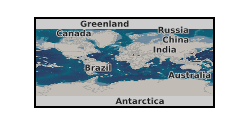
NERC Grant NE/M011488/1 X-ray powder diffraction patterns as xy datasets of limonites from Acoje (Philippines), Caldag (Turkey), Nkamouna (Cameroon), Piaui (Brazil) and Shevchenko (Kazakhstan) laterite deposits; reduced sulphide ore from Thakaringa Mine (Australia) and Captain deposit (Canada); processing residues from the Kevitsa Mine (Finland). The data were acquired during the NERC SoS Minerals CoG3 project between 2015 and 2018 using a PANAlytical X’Pert Pro diffractometer at the Natural History Museum, London, UK. Powdered samples were back loaded into a deep well holder, loaded into the instrument in reflection geometry and data collected using Co Kalpha radiation between 3 and 70 degrees 2Theta. These data were used primarily for phase identification. This may be useful within the mining sector, resource assessment, processing or prospecting, geo- or material scientists and processing engineers / metallurgists. The data were acquired in the Core Research Laboratories, Natural History Museum by the NHM CoG3 team. NERC grant: CoG3: The geology, geometallurgy and geomicrobiology of cobalt resources leading to new product streams
-
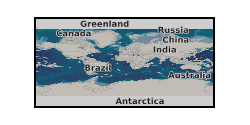
NERC Grant NE/M011488/1 ICP bulk chemistry as wt% oxide or elemental ppm of limonites from Acoje (Philippines), Caldag (Turkey), Nkamouna (Cameroon), Piaui (Brazil) and Shevchenko (Kazakhstan) laterite deposits; reduced sulphide ore from Thakaringa Mine (Australia); processing residues from the Kevitsa Mine (Finland). The data were acquired during the NERC SoS Minerals CoG3 project between 2015 and 2018 by ALS Global using either lithium borate fusion or 4 acid digestion. These data were used to assess bulk geochemistry, and the Co and Ni loading of the resources. This may be useful within the mining sector, resource assessment, processing or prospecting, geo- or material scientists and processing engineers / metallurgists. NERC grant: CoG3: The geology, geometallurgy and geomicrobiology of cobalt resources leading to new product streams
-
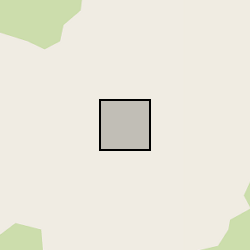
Chemical analysis of pyroxenes and BSE-SEM images from pumices and lava flows from Popocatepetl Volcano, Mexico. Whole rock isotope data from pumices and lava flows from Popocatepetl Volcano, Mexico.
-
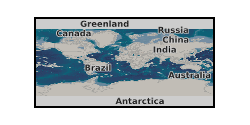
NERC Grant NE/M011488/1 Electron microprobe analyses of Mn-oxyhydroxide phases as elemental percentages per point analysis. Mn-oxyhydroxide phases were within limonites from Acoje (Philippines), Caldag (Turkey), Nkamouna (Cameroon), Piaui (Brazil) and Shevchenko (Kazakhstan) laterite deposits. The data were acquired during the NERC SoS Minerals CoG3 project between 2015 and 2018 using a Cameca SX100 electron microprobe at the Natural History Museum, London, UK. Point analyses were performed on samples set within epoxy resin blocks, polished and coated with carbon. All elements were analysed using wavelength dispersive X-ray spectrometers. These data were used to identify the Co and Ni bearing host minerals within each natural resource and to assess the amount and variability of these elements within specific Mn-oxyhydroxide phases. This may be useful within the mining sector, resource assessment, processing or prospecting, geo- or material scientists and processing engineers / metallurgists. The data were acquired in the Core Research Laboratories, Natural History Museum by the NHM CoG3 team. NERC grant: CoG3: The geology, geometallurgy and geomicrobiology of cobalt resources leading to new product streams
-
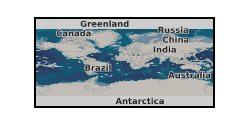
Computed tomography (CT) scans of extant and fossil chondrichthyans, of teeth organized into functional dentitions. These scans were taken on a Nikon Metrology HMX ST 225, in the Image and Analysis Centre, Natural History Museum, London.
-
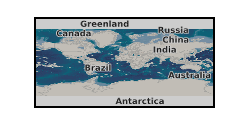
NERC Grant NE/M011488/1 Electron microprobe analyses of Fe-oxide and Fe-oxyhydroxide phases as elemental percentages per point analysis. The phases were within limonites from Acoje (Philippines), Caldag (Turkey), Nkamouna (Cameroon), Piaui (Brazil) and Shevchenko (Kazakhstan) laterite deposits. The data were acquired during the NERC SoS Minerals CoG3 project between 2015 and 2018 using a Cameca SX100 electron microprobe at the Natural History Museum, London, UK. Point analyses were performed on samples set within epoxy resin blocks, polished and coated with carbon. All elements were analysed using wavelength dispersive X-ray spectrometers. These data were used to identify the Co and Ni bearing host minerals within each natural resource and to assess the amount and variability of these elements within specific Fe-oxide or Fe-oxyhydroxide phases. This may be useful within the mining sector, resource assessment, processing or prospecting, geo- or material scientists and processing engineers / metallurgists. The data were acquired in the Core Research Laboratories, Natural History Museum by the NHM CoG3 team. NERC grant: CoG3: The geology, geometallurgy and geomicrobiology of cobalt resources leading to new product streams
-
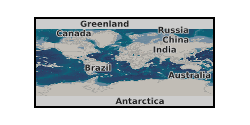
The data consist of several spreadsheets detailing the temporal and geographical distributions of testudinates (turtles, terrapins and tortoises) through time. Occurrence data includes information on taxonomy, geographical distribution and geological age and is limited to Mesozoic-Paleogene taxa. These data were compiled from the published literature on fossil turtles for NERC Standard Grant NE/J020613/1. These data form the basis for understanding the role of changing global climates and geography on testudinate diversity and distribution though time, with the aim of providing historical baseline data for modern conservation biology. The data represent a summary over 150 years of published research on fossil turtles and their relatives and were compiled over a period of 3.5 years during the tenure of a grant. To date they have provided the data used in analyses presented by Nicholson et al. (2015, 2016) and Waterson et al. (2016). Details of the analyses and the results obtained can be found in these papers.
-
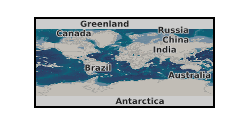
Two datasets containing multiple diversity metrics of planktonic foraminifera. Recent data is from MARGO (Multiproxy approach for the reconstruction of the glacial ocean surface); Eocene data is from NEPTUNE (a relational database of microfossil occurrence records from DSDP and ODP publications), supplemented by literature searches. These data are related to Fenton et al (2016) Phil Trans (DOI: 10.1098/rstb.2015.0224) Data used in Fenton et al (2016) Environmental predictors of diversity in Recent planktonic foraminifera as recorded in marine sediments. The original data is from the MARGO database (Kucera, 2007)
-
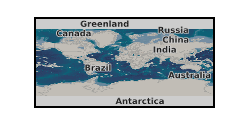
The data is in the form of excel spreadsheets and a word document of supplementary material. Publications: Foster, W.J., Danise, S., Sedlacek, A., Price, G.D., Hips, K. and Twitchett, R.J. 2015. Environmental controls on the post-Permian recovery of benthic, tropical marine ecosystems in western Palaeotethys (Aggtelek Karst, Hungary). Palaeogeography, Palaeoclimatology, Palaeoecology, 440, 374-394 Danise, S., Twitchett, R.J., Little, C.T.S. 2015. Environmental controls on Jurassic marine ecosystems during global warming. Geology, 43, 263–266; DOI:10.1130/G36390.1 Danise, S., Twitchett, R.J., Matts, K. 2014. Ecological succession of a Jurassic shallow-water ichthyosaur fall. Nature Communications, 5, 4789. DOI:10.1038/ncomms5789 Foster, W.J., Twitchett, R.J. 2014. Functional diversity of marine ecosystems after the Late Permian mass extinction event. Nature Geoscience, 7, 233-238. doi:10.1038/NGEO2079 Danise, S., Twitchett, R.J., Little, C.T.S. & Clémence, M.E. 2013. The impact of global warming and anoxia on marine benthic community dynamics: an example from the Toarcian (Early Jurassic). PLOS ONE, 8, e56255
-
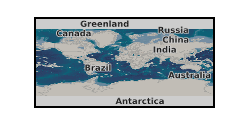
Published paper associated with NERC grant NE/F011091/1. Price, G.D., Twitchett, R.J., Wheeley, J.R., Buono, G. 2013. Isotopic evidence for long term warmth in the Mesozoic. Scientific Reports, 3, 1438. doi: 10.1038/srep01438
 NERC Data Catalogue Service
NERC Data Catalogue Service